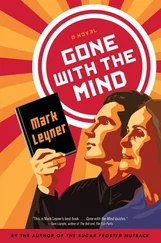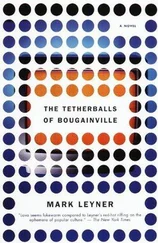By some unspoken consensus, the Gods determined one day that their Belle Époque was over and that it was time to disperse for a while, for each God and Goddess to go his or her own way. This was the Diaspora of the Gods. Several stayed in the vicinity of the Gods’ original “bus stop,” which experts have speculatively situated in the Abell 1835 Galaxy, some 13 billion light-years from Earth, while others place it in the Markarian 421 Galaxy, which is located in the constellation Ursa Major, a mere 360 million light-years away. Some Gods (e.g., El Brazo), of course, moved into Versailles-like coral and onyx palaces and sumptuous frangipani-scented hermitages miles underground in what is now Antarctica. Los Vatos Locos submerged themselves in a peat bog in Denmark for several million years. While some pursued esoteric, purely theoretical existences in strange, impalpable, zero-dimensional realms, others chose drab, quotidian lives (à la Jenny from the block) in small cities in the Midwest. Mogul Magoo, Shanice, and the Pistoleras inhabited the lush mountains of the Gondwana supercontinent. Lady Rukia and Doc Hickory lived on a cul-de-sac in Chula Vista, California. The lovers La Felina and Fast-Cooking Ali — both avatars of humility and self-denial — shrunk themselves down to about three micrometers tall (the size of a typical yeast cell) and lived in the anal scent-gland of a capybara named Dawson in the remote Caura forest in southern Venezuela. And then, one day in 1973, by some unspoken consensus, the Gods determined that their Diaspora was over and that they would all reconvene and, from here on in, occupy the top floors of the world’s tallest and most opulent skyscraper. Thus began a nomadic period during which the Gods constantly moved, en masse, from what had become the former tallest-building-in-the-world to the latest tallest-building-the-world. So, in the summer of 1973, the Gods and Goddesses all moved into the top floors of the Sears Tower (now known as the Willis Tower) in Chicago, Illinois. They then relocated, in 1998, to the Petronas Twin Towers in Kuala Lumpur, Malaysia; the Taipei 101 in Taiwan, in 2004; the Shanghai World Financial Center in China, in 2008; and finally, in 2009, the Burj Khalifa in the Business Bay district of Dubai, United Arab Emirates. The Burj Khalifa is 2,717 feet tall. And this is where the Gods currently reside.
The Sugar Frosted Nutsack is the story of a man, a mortal, an unemployed butcher, in fact, who lives in Jersey City, New Jersey, in a two-story brick house that is approximately twenty feet tall. This man is the hero IKE KARTON. The epic ends with Ike’s violent death. If only Ike had used for his defense “silence, exile, and cunning.” But that isn’t Ike. Ike is the Warlord of his Stoop. Ike is a man who is “singled out.” A man marked by fate. A man of Gods, attuned to the Gods. A man anathematized by his neighbors. A man beloved by La Felina and Fast-Cooking Ali, and a man whose mind is ineradicably inscribed by XOXO. Ike’s brain is riddled with the tiny, meticulous longhand of the mind-fucking God XOXO, whose very name bespeaks life’s irreconcilable contradictions, symbolizing both love (hugs and kisses) and war (the diagramming of football plays).
What will give us goose bumps and make us teary-eyed when, in the end, Ike dies? It’s the same thing that gave us goose bumps and made us teary-eyed when we heard Dusty Springfield sing “Since you went away, I’ve been hanging around / I’ve been wondering why I’m feeling down” in the song “What Have I Done to Deserve This?” It’s the same thing that makes all pop music so heartbreaking. Even when Miley Cyrus sings “So I put my hands up, they’re playin’ my song / The butterflies fly away / I’m noddin’ my head like ‘Yeah!’ / Movin’ my hips like ‘Yeah!’” in her song “Party in the U.S.A.” It’s that chirping mirth against a backdrop of despair, that juxtaposition of blithe optimism against all the crushing brutalities and inadequacies of life. The image of an ineffably beautiful butterfly flitting by the shattered windows of a dilapidated, abandoned factory is not so poignant because it highlights the indomitable life force. To the contrary, the butterfly (and the pop song) is like a PowerPoint cursor; it’s there to whet our perception of and strengthen our affinity for what’s moribund, for what’s always dying before our eyes. Loving the moribund is our way of signaling the dead from this shore: “We are your kinsmen…”
When Ike dies, at the hands of the ATF snipers or Mossad assassins or Interpol agents, or is beset by a swarm of nano-drones (depending on which story you choose to believe), he dies with a metaphysical coquettishness that befits a true hero, greeting his violent demise with silly, sweet, uninhibited laughter. All the Gods are suddenly talking at once; it’s this Babel, this incomprehensible cacophony, that just degenerates into white noise. And then it’s as if he’s stepped into an empty elevator shaft on the top floor of the world’s tallest building, and as he plummets down, he whistles the Mister Softee jingle—“those recursive, foretokening measures of music; that hypnotic riff”—over and over and over and over again to himself…
A hero.
What subculture is evinced by Ike ’s clothes and his shtick, by the non-Semitic contours of his nose and his dick, by the feral fatalism of all his loony tics — like the petit-mal fluttering of his long-lashed lids and the Mussolini torticollis of his Schick-nicked neck, and the staring and the glaring and the daring and the hectoring, and the tapping on the table with his aluminum wedding ring, as he hums those tunes from his childhood albums and, after a spasm of Keith Moon air-drums, returns to his lewd mandala of Italian breadcrumbs?
So begins the story of Ike Karton, a story variously called throughout history Ike ’s Agony, T.G.I.F. (Ten Gods I’d Fuck), and The Sugar Frosted Nutsack. This is a story that’s been told, how many times? — over and over and over again, essentially verbatim, with the same insistent, mesmerizing cadences, and the same voodoo tapping of a big clunky ring against some table.
Every new improvisational flourish, every editorial interpolation and aside, every ex post facto declaration, exegetical commentary and meta-commentary, every cough, sniffle, and hiccough on the part of the rhapsode is officially subsumed into the story, and is then required in each subsequent performance. So, for instance, the next time The Sugar Frosted Nutsack is recited, the audience will expect that the sentence “Every new improvisational flourish, every editorial interpolation and aside, every ex post facto declaration, exegetical commentary and meta-commentary, every cough, sniffle, and hiccough on the part of the rhapsode is officially subsumed into the story, and is then required in each subsequent performance” be included in the recitation, and if it’s not, they’ll feel — and justifiably so — that something vital and integral has been left out.
The audience will, in fact, demand that the sentence “So, for instance, the next time The Sugar Frosted Nutsack is recited, the audience will expect that the sentence ‘Every new improvisational flourish, every editorial interpolation and aside, every ex post facto declaration, exegetical commentary and meta-commentary, every cough, sniffle, and hiccough on the part of the rhapsode is officially subsumed into the story, and is then required in each subsequent performance’ be included in the recitation, and if it’s not, they’ll feel — and justifiably so — that something vital and integral has been left out” also be included in the recitation. And also the sentence that begins “The audience will, in fact, demand that the sentence ‘So, for instance, the next time The Sugar Frosted Nutsack is recited, the audience will expect that the sentence “Every new improvisational flourish…,”’” etc. And also the sentence that begins “And also the sentence that begins…” And also the sentence that begins “And also the sentence that begins ‘And also the sentence that begins…’” Et cetera, et cetera.
Читать дальше












